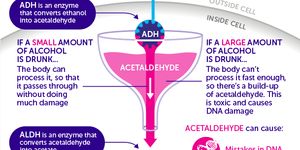How NOT To Turn Earth Into Radioactive Wasteland
The nuclear industry has become an indispensable part of our society. People rely on radioactive materials for power generation, diagnostic imaging and radiation therapy, food and medical supply sterilization, as well as many other tasks that are crucial to the growth and well-being of global communities.
Like many other industries, waste is generated during processes. But unlike others, radioactive waste can pose a serious threat to safety and security, because it is hazardous to all forms of life and the environment. Government agencies and international regulatory bodies such as IAEA (International Atomic Energy Agency) set up stringent regulations on how radioactive wastes are disposed of, in order to protect human health and the environment.
Radioactive waste comes from different sources. In countries with nuclear power plants or nuclear fuel treatment plants, the majority of waste is alpha particle emitters and originates from the nuclear fuel cycle. Radioactive waste from medical practice, mostly beta and gamma particle emitters, can be divided into two main classes depending on the half-life of the isotopes.
Radioactivity naturally decays over time, so radioactive waste has to be isolated and confined in disposal facilities for a sufficient period until it no longer poses a threat. The time radioactive waste must be stored for depends on the type of waste and radioactive isotopes. Current approaches to managing radioactive waste have been segregation and storage for short-lived waste, near-surface disposal for low and some intermediate level waste, and deep burial or partitioning/transmutation for the high-level waste.
Source: IAEA via Youtube
Featured image source: alphabetics info








